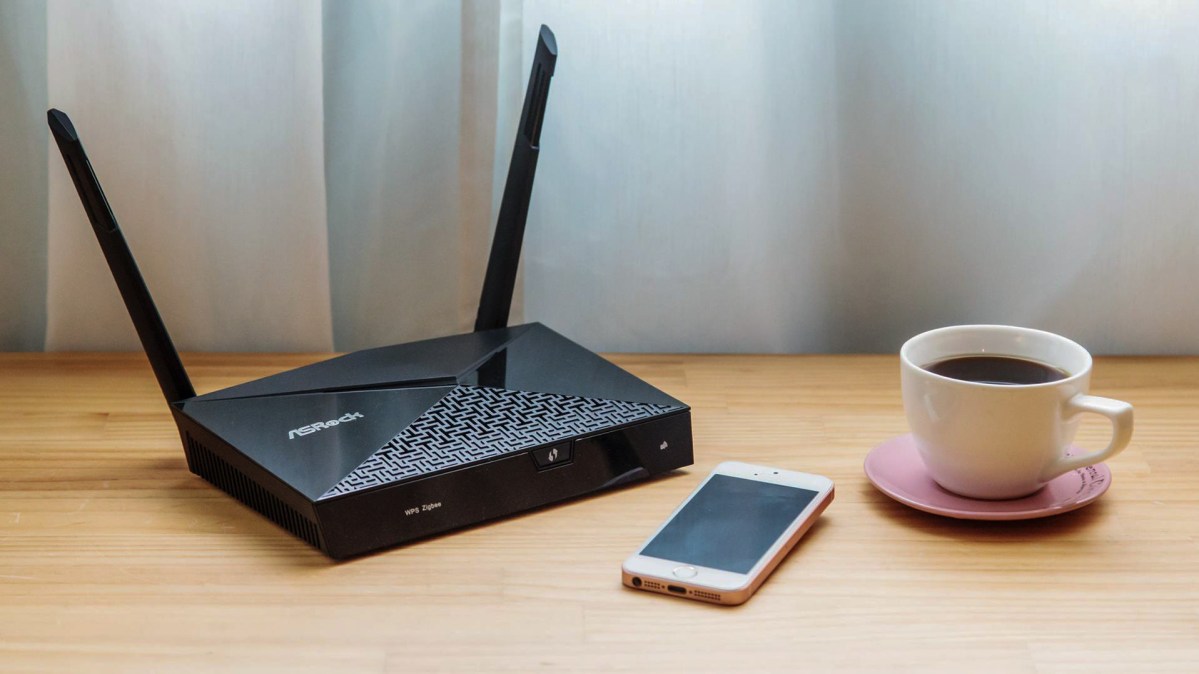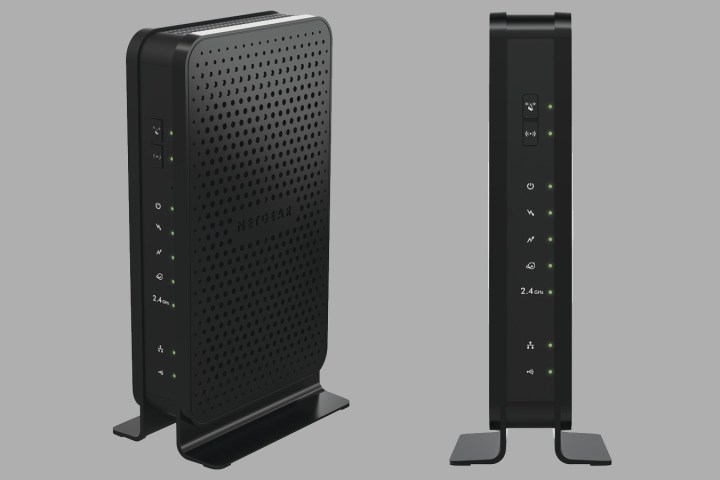When you use the internet, you’re likely using both a modem and a router. But what are they, and how do they work together? In short, the modem is the doorway to the internet, while the router directs the internet (and its traffic).
See more
While you can have a separate router and modem, you can also find devices that combine both functions — hence the confusion over which you have. We’ll discuss both components in-depth and explain how they work together.
Modem

Modem is short for “modulator demodulator,” which means that it modulates transmissions to receive and carry data. It’s the door to the internet that receives and sends data between cables/telephone lines and all the devices in your home. Think of it as the interpreter that makes everything possible, translating the internet from the massive infrastructure highways to the smaller pathways inside homes and offices.
The modem is your on-ramp to the world wide web. They are offered as part of packages by IPSs (Internet Service Providers) across the United States, big players like Verizon, Comcast, and Spectrum. These and similar broadband providers “rent” modems as part of their subscription plans so you can access their subscription-based service. But you can purchase compatible modems separately from any retailer to cut down on the monthly cost. Either way, you’ll need one to access the internet.
How it works
Modems usually include lights/LEDs along their front, so you can see what’s going on at a glance. One light indicates that the unit is receiving power, one signals that it’s receiving data from your internet service provider, and one shows that the modem is successfully sending data.
This is where you start in a troubleshooting scenario: If the send and/or receive lights are blinking, then your internet service provider is likely having issues, or something is going on with the connection outside. Another LED is provided, indicating that wired devices are accessing the internet.
Newer modems on devices like laptops are also going more wireless, such as Intel’s 5G modems, but this isn’t yet a common option for the average in-home internet connection.
Before we move on, note that modems aren’t just for a coaxial cable connection. Broadband can also be served up through a Digital Subscriber Line, or DSL. This internet on-ramp is accessed through telephone lines instead of coaxial cables, so the connecting jack looks no different than what you would see on physical, land-based phones. DSL is typically slower than cable-based broadband and useful in rural areas where phone lines already exist, but there’s no infrastructure supporting cable-based TV and internet services.
Routers can be designed for either cable or DSL connections, but both types have several additional Ethernet ports that are used for wired devices with a matching port or adapter. These can include desktops, laptops, HDTVs, gaming consoles, printers, and more. If you want the most out of your broadband connection, using these ports for your hardware is the best option, especially if the ports support speeds of up to 1 gigabit per second (aka gigabit Ethernet).
Router

The router is a stand-alone device that connects to an Ethernet port on the modem and “routes” networking/internet traffic to its connected devices. Routers typically have a dedicated, color-coded Ethernet port that it uses to physically connect to the modem (WAN, or Wide Area Network) and four additional Ethernet ports for wired devices (LAN or Local Area Network).
Thus, the router sends and receives networking traffic from the modem with one connection and routes all that data through its four Ethernet ports and through the air via the 2.4GHz and 5GHz bands. Despite advertised numbers, wired is faster than wireless, and we still suggest using Ethernet if you want every ounce of bandwidth out of your subscription. But obviously, you can’t do that with smartphones, and draping Ethernet cables along every wall is just downright ugly.
Routers come in all sizes, prices, and exaggerated promises. On the wireless side, they can include two external antennas or more, depending on the model. The more spiky antennas, the better the Wi-Fi coverage — at least in theory. Your connection speed will still depend on your proximity to the router and the technology powering that connection.
While most existing routers use the 802.11.ac standard (Wi-Fi 5), newer ones can support Wi-Fi 6, which we explain here.
How it works
If all of this is confusing, just imagine a high-speed train. It enters your home through the modem, travels to the train station (router) at full speed, and is redirected to a destination. If the destination is a wired connection, then it plows full speed ahead. If the destination is wireless, its speed is based on how many tracks/streams it can use at once (one, two, three, or four), the amount of congestion these tracks must penetrate, and the distance between the train station and the destination. The train will lose speed the farther it travels away from the station.
The “up to” term means the hardware is physically capable of supporting those maximum speeds, but again, you won’t see them. Part of the “congestion” slowing your local data train is your neighbor’s network spreading the love in the same airspace. There’s also interference from devices within and outside your home. Having a router with multiple external antennas with amplifiers will help push back all that unwanted noise.
Typically, routers will choose the ideal channel for the 2.4GHz and 5GHz bands that have the least interference. The 2.4GHz band is divided into 14 channels, while more than 20 are set aside for the 5GHz band. But if you’re having connectivity issues, manually changing the channels within the router’s web-based interface can sometimes help. There’s a lot more at play regarding speed that gets into the heavy technical territory and can make your head spin.
Check out our list of the best wireless routers you can buy right now. The top routers on the market include models like the Netgear Nighthawk AX5400, TP-Link Archer AX6000, and Google Nest WiFi (more on mesh Wi-Fi systems below).
Router/modem combo

Unfortunately, there’s no official name for this specific device. Comcast calls it a “gateway,” while Spectrum simply calls it a modem. Regardless, you get the idea: It’s an all-in-one device that looks like your typical modem but crams a router inside. This combo unit can be beneficial and a drawback, depending on how well you want to manage your network.
In the typical stand-alone modem, you can adjust firewall settings, open ports for specific traffic, assign addresses, and so on. The add-on router essentially provides a secondary firewall for better protection along with parental controls, device management, usage statistics, and more. When combining the two, you lose that second firewall aspect and possible customization not provided by equipment rented from ISPs.
Another aspect to consider is that even though you’re “renting” one all-in-one device, your broadband provider may be charging you an additional fee for wireless service. Spectrum calls this a “Home Wi-Fi” charge that shows up on your bill for an additional $5 per month and only applies to modems with a built-in router rented out by the company. For complete control and a lower monthly bill, you’re better off supplying your own stand-alone router.
Mesh

But wait! There’s more! A newcomer has arrived to crash the networking party. It’s similar in nature to routers but different in delivery. More specifically, the router is a single unit that broadcasts an internet connection like a radio tower. The farther away those broadcasts travel, the weaker the signal, thus a resulting slower speed. You get the same effect in a moving car: The farther away you move from the city, the harder it is to hear your favorite music station.
Even more, the 2.4GHz band is great for penetrating objects and walls, but its throughput speed is slower than the 5GHz connection, mostly due to congestion. Meanwhile, 5GHz is faster and less congested, but it has difficulty penetrating objects and walls.
One way to solve this problem is to purchase a second wireless extender device. It grabs the signal produced by the router and repeats it to areas outside the router’s reach. This is helpful in dead spots, but the drawback is that repeaters are grabbing an already-degraded signal unless you actually have a wired Ethernet connection between the router and the extender. These extenders are sold in various sizes and strengths, ranging from wall-based units to solutions just as big as routers.
Arriving to alleviate all those woes is mesh-based networking. Kits are typically sold with two or three identical units, thus the setup doesn’t consist of a router and an optional extender. Instead, one plays the router role by physically connecting to the modem’s output and then routes all traffic to and from the wirelessly connected nodes. So instead of a single unit broadcasting an internet bubble, you have multiple units creating a mesh-based blanket of coverage.
The awesome thing about these kits is that you get a single connection: The kit decides whether your device should use 2.4GHz or 5GHz. In addition, you won’t be able to see if your wireless devices are switching from one node to another as you change spots in your home. The main disadvantage is that these mesh-networking kits are expensive. They can be longstanding investments unless you’re okay with spending serious money every time an updated kit is released.
Kinda sorta mesh

The Netgear Orbi has two different connectivity styles, which merge to form a single efficient product. This kit features two components that resemble a mesh networking kit in practice. One of the components works as a router at its core, giving users the complete functionality of a stand-alone router. The second unit works as a satellite that doesn’t “repeat” the router-class unit’s signal.
Under this design, the two units are ultimately splitting three connections. There are two Wi-Fi bands, which measure at 2.4GHz and 5GHz and can quickly connect to most wireless devices. The third connection is a 5GHz band used entirely by the Orbi units. This band provides a secure channel accessible by Orbi network components — meaning that no other wireless devices can use it. That is the primary difference between the Orbi and other mesh-based systems. The nodes take advantage of the same 5GHz space along with all other connected devices, which results in the nodes and devices fighting over the same traffic. Conversely, the Orbi’s designated highway is free of anything but Orbi-to-Orbi communication.
To learn more about this product’s specificities, you can read our review of the Orbi RBK40 kit here or check out the more extensive (and more expensive) Orbi RBK50 kit here.
Editors' Recommendations
- Google Drive vs. Dropbox: which is best in 2024?
- GPT-4 vs. GPT-3.5: how much difference is there?
- What is Thunderbolt, and is it different from USB-C?
- The 6 best internet speed tests for desktop and mobile in 2024
- What is SATA? Here’s everything you need to know about it


